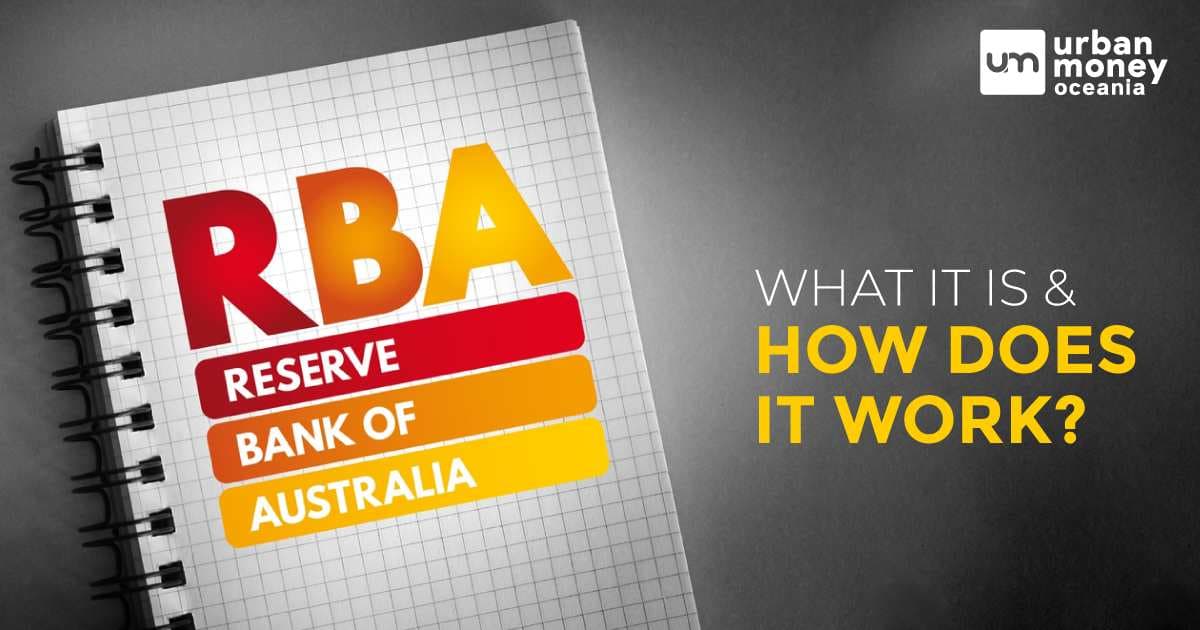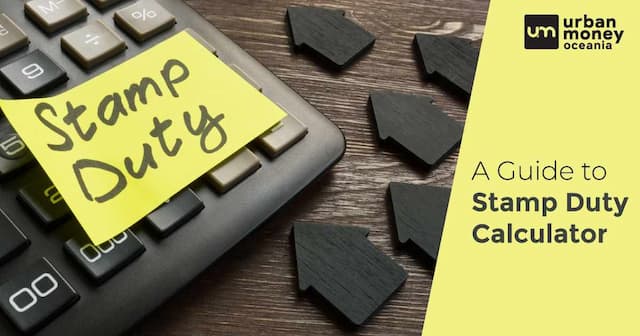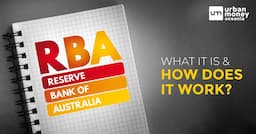What is the RBA Cash Rate and How Does it Affect You?

A cash rate can be described as the interest rate that a central bank like the Reserve Bank of Australia charges commercial banks for loans. This rate is also known as the base interest rate or bank rate. At the beginning of each month, the central banking authority announces if the official RBA Cash Rate will remain the same or change. This announcement has huge implications for lenders, banks, and everyday Aussies. So what does the RBA cash rate mean exactly? How does it work? And what ramifications does it have for you? Find out more in this blog.
What Exactly is the RBA Cash Rate?
The RBA cash rate is the rate set by the central banking authority, which represents the RBA interest rate at which lenders and banks in the country have to repay the money they borrow. The Reserve Bank of Australia describes the rate as an “overnight money market interest rate”. The justification behind this is that banks often issue loans to each other and the process to do so is done overnight. While the commercial banks in the country have the freedom to set their own interest rates for borrowing, the interest rates associated with loans and what they offer on savings are linked to the RBA cash rate.
What Does the Reserve Bank of Australia Do?
The RBA is the central banking authority of Australia and is responsible for drafting the basic monetary policy and maintaining the strength of the nation’s financial system. The RBA board has three main duties to quote the organisation's charter. Namely, to contribute to the best of its abilities to maintain the stability of the currency in Australia, maintain employment in Australia, and promote the welfare and economic prosperity of the Australian people.
One of the main responsibilities of the RBA board is to determine the official cash rate. On the first Tuesday of every month (excluding January), the board convenes to deliberate on the monetary policy and to discuss whether or not to bring changes to the prevailing cash rate. These meetings generally lead to one of three conclusions- lower the cash rate to stimulate borrowing and spending in the country, raise it to keep inflation in check or keep it at the same level.
How Often Does the RBA Change the Cash Rate?
Even though the RBA board has the power to alter the cash rate during each of its monthly meetings, the RBA cash rate increase announced in May 2022 was the first rate change in over a year. The previous RBA cash rate was announced in November 2020, when the rate was lowered to 0.10% from 0.25% to negate the prolonged effects of the Covid-19 pandemic. The cash rate remained steady until the rise to 0.35% in May 2022, which was succeeded by an increase of 50 basis points in June and July.
What’s the RBA Cash Rate History?
Until the recent cut, the RBA cash rate had been experiencing a steady decline since November 2011, when the rate was brought down to 4.50%. That is a stark contrast to some of the highs of the RBA cash rate from the 20th century when it reached its peak of 17.50% in January 1990. It wasn’t until September 1991 that the figure fell lower than 10% to 9.50%.
Why Does the RBA Change the Cash Rate?
The Reserve Bank of Australia considers several factors while deciding whether to change the cash rate. Given below are some of the factors that affect the RBA’s decision to change the cash rate:
Inflation
Inflation can be defined as the rise in the price of commodities and items from time to time; this is usually determined on an annual or quarterly basis and is the main indicator of an economy’s performance. The RBA has set a medium-term inflation benchmark of 2%-3%. If inflation increases too much, it usually raises the cash rate to help Australians to maintain their buying capacity. If the inflation rate is below the target benchmark, the RBA might lower or leave the cash rate unchanged.
Employment
The employment level in a country is a major indicator of an economy’s performance. If the unemployment rates in Australia are high, the RBA might lower the cash rate to encourage investment and spending in the economy. This will directly result in the creation of more jobs in the country. But when job creation is concerned, the unemployment rate is not the only thing that is taken into account by the RBA. Even if the unemployment rate is low, the RBA might opt against raising the cash rate if wage growth is also low. This is because slow wage growth tends to be in tandem with low inflation and sluggish economic growth.
Economic Growth
The RBA has stated that the economic growth in Australia is usually depicted as a percentage of the national gross domestic product- the cumulative value of all the goods and services produced in the country annually. If the economic growth shows signs of slowing down, the RBA might decide to cut the RBA cash rate as a measure of economic stimulus. This was last experienced in 2020 when the board decided to set the rate at its lowest value in history in a bid to counter the economic repercussions of the Covid-19 pandemic. In theory, this might be an added incentive for financial institutions and consumers to borrow and spend money, which might put the economy on an upward spiral.
Does the RBA Cash Rate Affect the Banks’ Interest Rates?
Even though the RBA’s monthly cash rate announcements are crucial in influencing how lenders and banks determine their interest rates, they are not the only things considered while making the decision. As the RBA dictates, three main factors determine how lenders and banks determine their interest rates and whether to raise or lower them. Given below are each of these factors:
Funding Costs
Funding costs can be defined as the interest rates applicable when the bank borrows money and provides on their savings account options. If the funding cost rises, a bank may be inclined to increase the interest rates it charges its borrowers to remain profitable. However, if the lending rates increase, it might lead borrowers to be more wary and borrow less. Therefore, banks must balance these factors to remain profitable.
Competition From Other Banks
Australia's banking and lending marketplace is highly competitive, and to remain profitable, they must compete for borrower’s money. This competitiveness can impact the interest rate movement; banks and other financial institutions may choose to lower their lending rates or raise interest rates on their savings account to attract new refinancers and customers.
Default Risk
Banks and other financial institutions are usually concerned with borrowing risk, so before lending money to a borrower, they will carefully analyse the default risk of the borrower. If the bank or lender determines a certain type of lending to be riskier, for example, lending to borrowers who plan to buy an investment property to rent out to tenants, they will typically raise the interest rate on that type of lending.
How Does the RBA Cash Rate Affect Home Loans?
While the RBA cash rate does not directly affect home loan interest rates, and banks and lending institutions are not mandated to follow RBA directives, most will consider the RBA cash rate while deciding their own interest rates. When the cash rate is low, lenders and banks in Australia can be expected to offer lower interest rates to first-time homebuyers and refinancers in the housing sector. However, an increase in the cash rate may mean that home loan rates can go up. This is because banks prefer to absorb and pass on the cost of the rate hike.
How Does the Cash Rate Affect Deposits?
Usually, the up-and-down volatility of the RBA cash rate has a similar effect on the savings account and term deposit interest rates. If the RBA cash rate increases, banks tend to increase the interest rates on deposits, encouraging people to make deposits in savings accounts to generate interest. Alternatively, if the cash rate decreases, banks will likely provide lower interest rates on deposits, implying that people will earn less interest from their savings.
Frequently Asked Questions
What is the RBA Cash Rate?
The RBA cash rate can be defined as the interest rate charged by the Reserve Bank of Australia on loans granted to commercial banks.
How does the RBA determine the cash rate?
The RBA determines the cash rate in monthly board meetings by considering several factors like economic growth, employment level, and inflation.
What is the current RBA cash rate?
The prevailing RBA cash rate as of November 2022 is 2.850%.
Related Posts

Jul 12, 2023
What is a Stamp Duty?

Jun 30, 2023
Home Loan Guides











